1636 - the year of Corby
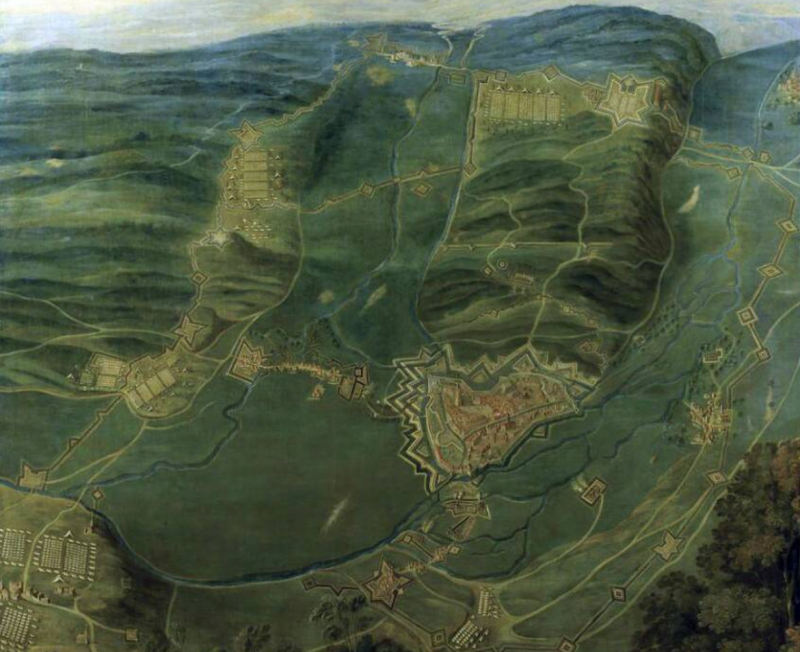
For the next year, 1636, Cardinal Richelieu planned what he considered to be more limited tasks. The main blow was planned to be delivered in Franche-Comte, since the cardinal was sure that this French-speaking province with obscure jurisdiction could easily be annexed to France.
Later it turned out that he was sure absolutely wrong. The relatively small army of Franche-Comte (10-13 thousand people) did not prevent both sides from passing through the territory of the province, but connected with the imperials when the French tried to occupy it, that is, the province.
Moreover, the French had to deal with the local militia, which waged a guerrilla war until 1644, when Cardinal Mazzarini (better known as Mazarin), who replaced Richelieu, did not agree to leave the province alone for moderate compensation.
True, this war facilitated its subsequent capture by France after about 20 years. Due to hostilities, famine and epidemics, the population of Franche-Comté was reduced by more than two-thirds, and the survivors no longer had the strength or desire to resist.
A second strike against the Duchy of Milan was also planned, but Italy was still considered a secondary direction. In Germany, it was supposed to complete the expulsion of the Imperials from Lorraine and Alsace, in order to then contribute to the attack on Franche-Comté. In other areas it was supposed to be limited to defense.
Of course, the Habsburgs had their own plans (the Spanish had some, the Austrians had others). Spain traditionally had the Netherlands as a priority, and initially both Madrid and Brussels planned an offensive against Flanders, using the Schenk (Schenkenschans) fortress captured last year as a springboard.
Of course, the stadtholder (viceroy) of the Spanish Netherlands, Cardinal Infante Don Fernando, assumed that the Dutch would try to recapture it, but did not expect it to happen so quickly - on April 30, that is, before the start of the campaign. Then the Cardinal Infante remembered the proposal of his ally, the Bavarian elector, to invade France to lay siege to Paris. Only in this way, in the opinion of the Elector, could Richelieu be forced to withdraw from the war. Since the initiative is punishable, the Cardinal Infante asked the Elector to send him the Bavarian cavalry, led by Johann von Werth.
As for the Austrian Habsburgs, they mainly planned to conduct defensive operations. Assistance to the Spanish allies was supposed, but initially in a very vague form - at the level of "it would be necessary to somehow help the Spaniards." Only in June, King Ferdinand of Hungary (that is, the son and heir of the Holy Roman Emperor) and General Gallas developed a plan to attack the eastern province of France - Burgundy through Franche-Comté.
At the same time, Gallas had a secret order from the emperor not to risk the army and not to go far into France. This despite the fact that the general himself preferred to fight on defense. Nevertheless, such a double offensive - the Spaniards with allies from the north, through Picardy and the Imperials from the east, could be very dangerous for France, but only in the case of concerted action.
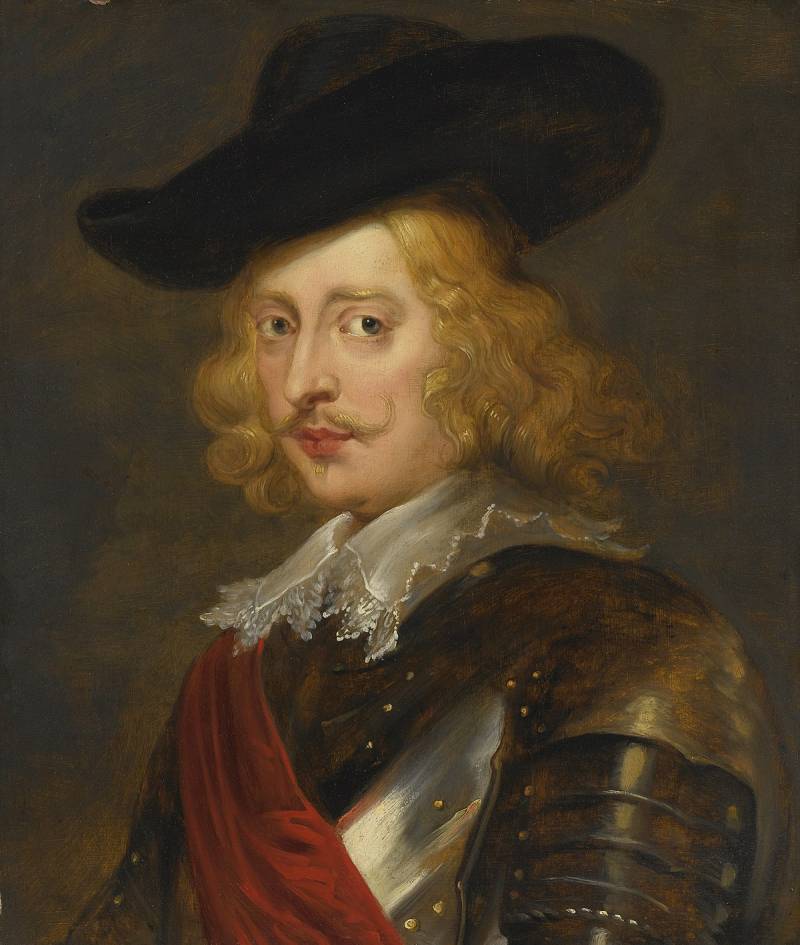
Portrait of the Cardinal Infante by Rubens.
The first to start fighting in 1636 were the French and their allies, namely Prince Bernhard and Cardinal La Valette. The combined army, presumably, numbered about 15 thousand people. In all likelihood, they started the campaign at the end of May. Little is known about its beginning. Cardinal La Valette again sent a wagon train with food to the blockaded Hagenau (June 10).
The cities in the north of Lorraine and Alsace - St. Avold, Sarbur (Saarburg), Fenetrange, Pfalzburg and St. Dieu, were taken without much effort, but the Allies besieged Saverne for more than a month - from the beginning of June (possibly earlier) until July 15 . General Gallas left a large garrison in the city - more than 7 thousand people, led by an energetic commander. The size of the garrison looks very overestimated for a small town, but in this case I, like an akyn, write what I read in the source.
The siege of Saverne is usually written about in the biographies of Turenne. It was he who proposed, after two unsuccessful assaults on the upper city (and almost continuous shelling), to strike again in the same place, but only a distraction, and the main one - on the lower city, where the walls were not so high. However, having burst into the city, the French and Germans of Bernhard found that every street was blocked by barricades and it was necessary to fight for any of them.
In the end, left without water and almost without gunpowder, the remnants of the garrison surrendered, having received the right to free exit on honorable terms. The Allies lost more than 2 thousand people killed, incl. many officers, Turenne and Prince Bernhard himself were wounded.
One of the French officers in his memoirs claimed that only a thousand people left the city and joined the army of Gallas, who met them as heroes. Again, it is hard to imagine that the garrison capitulated only when it lost 6 thousand people out of 7-7,5 thousand. Usually, even the Spaniards, whose stubbornness turned into stubbornness, still surrendered earlier.
For example, in the Schenkenschans garrison at the time of the surrender, 600 out of 3,5 people remained, and the Corby garrison (more on this later) surrendered when a little more than 1 out of 000 people remained. Just in case, I clarify that the phrase “Sorry, señor, but this is the Spanish infantry” – refers exclusively to the cinema. In any case, the losses of the Imperials were very significant.
All this time, Gallas remained in his fortified camp in Drusenheim, not trying to help the garrison. He even built a pontoon bridge across the Rhine for a possible retreat. In addition to the constant problems with food, a rather unexpected new one appeared. Several thousand light cavalrymen, recruited in Poland without pay, almost killed their colonels and began to plunder the surrounding area.
It took a lot of effort to send them home. Apart from these warriors, the Gallas army in the spring of 1636 also numbered about 15 thousand people - 12 thousand infantry, 2,5 thousand cavalry and 1 dragoons.
Almost at the same time as Prince Bernhard and La Valette launched an offensive on Franche-Comté and Prince Condé Sr. On May 27, he crossed the border of the province and already on May 29 began the siege of its capital, the city of Dole. The army of Conde numbered more than 20 thousand people, including several old regiments; 15 thousand of them besieged the city, and the rest covered them, that is, they robbed nearby villages and small towns.
The townspeople prepared well for the siege, and the prince stood out only for his nobility, but not for his military talents, so the French did not have much success in two and a half months, while the losses amounted to 5 thousand people.
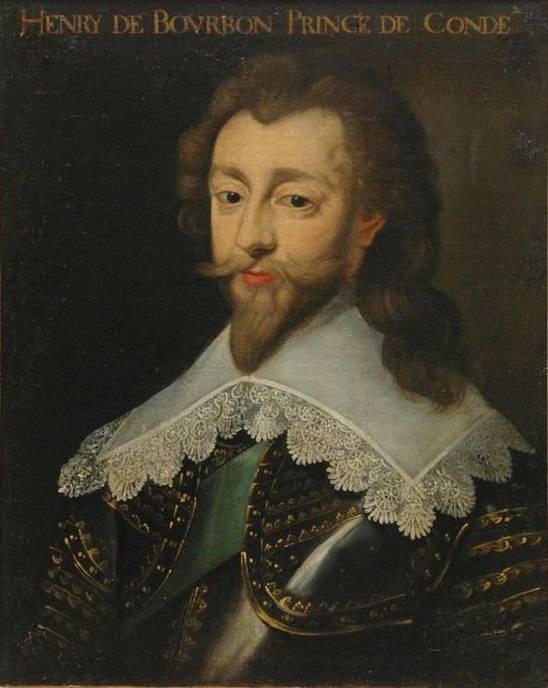
Prince Henri de Conde
Finally, after long delays, the Spaniards (or rather, the Spaniards, Imperials and Bavarians) went on the offensive. The number of their army in various sources was determined from 25 (according to D. Parrot - 12 thousand infantry and 13 thousand cavalry) to 42 thousand people (according to French data). At the end of June, they crossed the border of Picardy and already on July 2 occupied the fortress of La Capelle.
Their further progress turned out to be unexpectedly easy for them. If some French units, like the Piedmontese regiment, put up stubborn resistance, they were easily bypassed. By the end of July, the Allies reached the Somme River. The commander of the French army, Count Soissons, had only about 10 thousand infantrymen at his disposal; sometimes they add it - without gunpowder and wicks, but this is very hard to believe, because such an army could not fight at all.
On August 2, after several days of fighting, the Spaniards conditionally crossed the Somme and went to besiege the city of Corby, 145 km from Paris. Von Werth insisted on an immediate attack on Paris, but the Cardinal Infante considered it necessary to somehow provide the rear of the army. From the height of our time, we can say that von Werth was right.
An attempt by a relatively small army to capture a huge city was a gamble by definition, and it had to be treated as a scam: if you were lucky (due to panic or surprise), it was good, if not, then it was not destiny. However, the delay was small - Corby was surrendered by the French on August 15, after only a week of siege, although the garrison numbered 1 people, and the Spaniards did not make a single attack. One of the detachments of the Spaniards reached Pontoise, a town just 800 km from Paris.
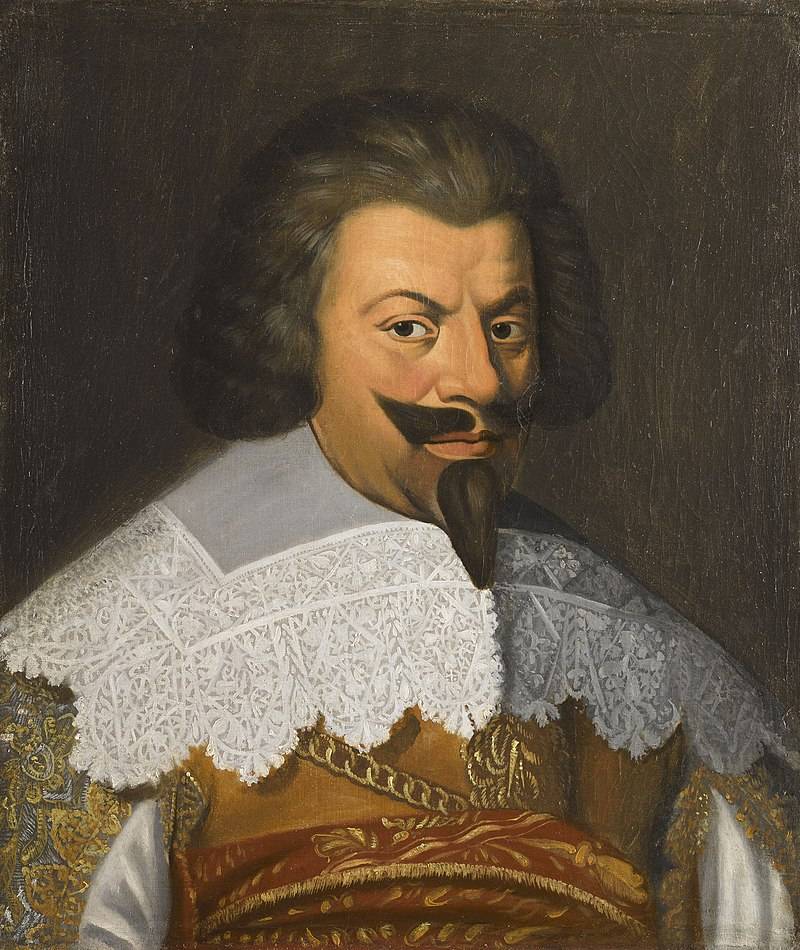
Scary background vert. After the siege they scared the children
The news of the fall of Corby caused considerable panic in Paris, since it was assumed that the fortress would hold out for at least three weeks, and at the same time an explosion of patriotism. I don’t presume to judge what was more - Francophiles write more about the second, Francophobia - about the first.
Probably, the militia of 50 thousand people, assembled by King Louis XIII during September, existed only on paper, nevertheless, some of them were collected, and if such a militia was of little use for battles and campaigns, then it was quite . Almost 50 years ago, it was the townspeople who quite successfully defended Paris, first from King Henri III, and then from the future King Henri IV.
Meanwhile, requests for help from the Franche-Comté parliament were finally heard in Brussels. With a small army, the Duke of Lorraine left Liege in Belgium (I don’t know how he got there) and by August 9 appeared in Franche-Comte. Along the way, he joined small detachments of Spaniards, Imperials and the army of Franche-Comté itself, so that when he approached Dole on August 14, he had 7-8 thousand cavalry and 5-6 thousand infantry.
Combined with Dole's garrison of 4 men, this was enough to force the Prince of Condé to lift the siege. Which he did by August 15, leaving artillery (probably siege artillery, which was difficult to take away) and most of the convoy. 9 thousand people from his army immediately went to Paris, the rest retreated to the town of Ausonne in Burgundy.
Finally, in mid-August, the main army of Gallas left the camp at Drusenheim, entered Franche-Comte in early September, and on September 12 joined up with the vanguard sent earlier. On September 15, Gallas crossed the Sona and occupied the city of Champlite, where he began to build another fortified camp. The combined army of Gallas and the Duke of Lorraine at that time numbered 30-40 thousand people (the second figure is probably taking into account the army of Franche-Comte), almost twice as many as the French - that is, the remnants of the army of Conde and urgently arrived in Franche -Conte Bernhard von Sachsen-Weimar and Cardinal La Valette.
Charles of Lorraine assured that it was necessary to immediately go to the capital of Burgundy, the city of Dijon, and, most likely, he was right. The fact is that at about the same time, that is, in the tenth of September, the Spaniards began to retreat from the Oise River. Time worked against them - the French gradually pulled up reserves (although those 9 thousand people from the Condé army only managed to make it to the cap analysis).
One site lists as many as 30 regiments assembled by King Louis XIII to defend Paris. Supply problems were growing - the French burned grain stocks and broke mills. At the same time, there were no signs of the imminent offensive of Gallas. The Cardinal Infante had to go back to Flanders, while thoroughly strengthening Corby - Louis XIII admitted that the Spaniards fortified the city in two months better than the royal engineers in two years.
The siege of the city began on September 27, when the rains had already begun. Von Werth tried to send reinforcements to the garrison, but the Count of Soissons' army prevented this. Six weeks later, on November 6, the remnants of the Spanish garrison capitulated. Richelieu thanked God's Providence, and Louis XIII thanked his old regiments, which had endured the brunt of the siege. The threat to Paris was eliminated, but the fortresses on the other side of the Somme remained in the hands of the Spaniards.
For a month from mid-September, there was a small war in Franche-Comte. The French and Weimar camped 20 km from Champlitt, but did not enter into battle. There were fights between small detachments sent to get food and cavalry raids. Separate detachments also entered the territory of Burgundy.
Of course, this state of affairs suited the French and absolutely did not suit the imperials. They had more food problems, and the county authorities could not provide assistance, even if they really wanted to - the province was already thoroughly ruined; meanwhile, the Prince of Condé was fortifying Dijon.
At the end of September, an artillery park arrived at the Gallas camp, and on October 7, another 6,5 thousand reinforcements arrived. Only after this did Gallas feel strong enough to attack French Burgundy. By this time, the Cardinal Infante had already returned to Flanders, and the most dangerous thing that the Imperials could do was to settle in winter quarters in the unravaged French province, at least this was feared in Paris.
On October 10, the Gallas army left the camp, it included 22-25 thousand infantry, 5-8 thousand cavalry and 80 guns (according to other sources - only 40), i.e. about 30 thousand people - either the big losses of the small war affected, or some part of Gallas left in reserve in Franche-Comte. On October 22, the army crossed the border of Burgundy and moved towards Dijon, on October 24 the town of Mirbeau was captured, but its inhabitants managed to burn food warehouses. However, a little before reaching Dijon, the army turned to the southeast and, passing by the city, headed for the town of Saint-Jean-de-Lon.
The reasons can only be guessed at. On the one hand, it is clear that in two months the fortifications of Dijon were strengthened so much that it was not possible to take it from a raid - this was already clear, unless Gallas made sure personally. On the other hand, Saint-Jean-de-Lon controlled the crossing of the Saone River and the supply line with Dole. It is also likely that this is where Gallas planned to arrange winter quarters.
The advance units of the Imperials reached the city on 25–26 October. The city had only 250 soldiers, 400 militia and 8 cannons. As far as can be judged, only part of the army of Gallas under the command of Charles of Lorraine led the siege. The rest was encamped between Saint-Jean-de-Lon and Dijon and covered the besiegers from the army of La Valette and Prince Bernhard, located in Lonvik south of Dijon. They write that the Gallas camp was located in Monto, but this is 65 km northeast of Dijon and even further from Saint-Jean-de-Lon, so this seems unlikely.
Since October 27, assaults and shelling did not stop, and on November 1, fighting was already taking place on the streets of the city. The next day, the besieged managed to beat off two assaults, but the third did not happen.
Firstly, it rained all week, intensified even more in November, and finally on November 2, the Sona flooded and flooded the camp of the besiegers, who, to top off all their troubles, were left without food. By the way, later Gallas explained his failure precisely by difficult weather conditions (indeed, who would have thought that heavy rains would charge in the middle of autumn, the same as snow in Russia in December). In fact, rain was the norm for this time of year, and snow showers were a possibility to be reckoned with.
Secondly, the besieged received reinforcements - another future French marshal, and then the mareschal-de-can von Rantzau left Dijon and, having made a big detour, went to the city from Franche-Comté in the evening. He brought with him 1 infantrymen.
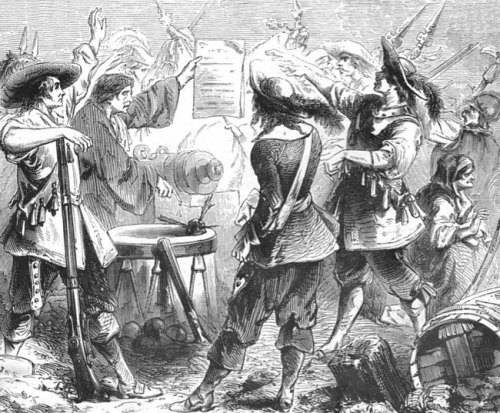
Militias swear to defend Saint-Jean-de-Lon
On November 3, the Imperials lifted the siege and withdrew to Monto. Directly during the siege, the losses of the Imperials amounted to 700-800 people, but during the retreat they had to abandon part of the artillery (at least 16 guns, and most likely heavy ones) and the convoy. Further retreat led to new losses, although the pursuit was not very energetic.
Comte de Guiche directly writes that it was Prince Bernhard who showed excessive caution, and when he was persuaded, it was already too late. Nevertheless, the Imperials lost several thousand rearguards, perhaps up to 8, and de Guiche mentions 2 who surrendered without a fight.
Gallas then continued his retreat. Another reason for him was the news of the victory of the Swedish General Baner at Wittstock on November 4 over the Imperials and their new Saxon allies. From Monto Gallas set out east, crossing the Saône on 12 November and continuing on to Franche-Comté. There he left 5 infantry and 3 cavalry regiments, and with the remaining army, by the end of December, he approached Breisach on the Rhine.
It is believed that during this campaign he lost from a third to a half of the army - for all reasons, including sanitary and desertion. The troops took up winter quarters across the Rhine between Speyer and Karlsruhe. The French received reinforcements brought from Normandy by the Duke of Longueville, but they arrived too late. Separate skirmishes continued after the departure of Gallas, but they no longer had much significance.
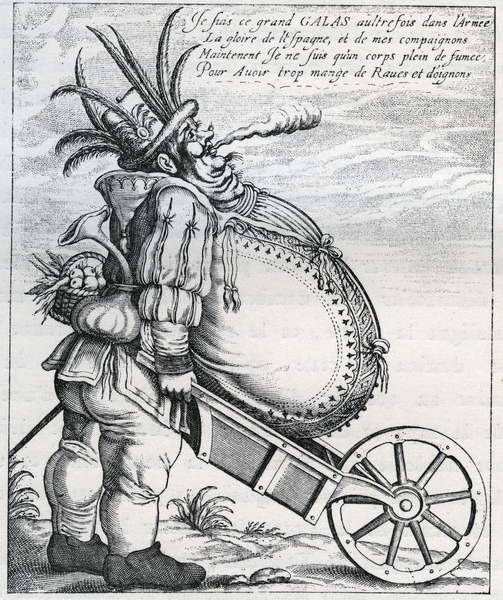
French caricature of Gallas
Thus ended the year of Corby - the most difficult, as it turned out, the year for France.
The Habsburg blitzkrieg failed in the same way as the French one a year earlier - it was not possible to force France out of the war. The Cardinal Infante only carried out a successful raid and captured several fortresses in Picardy. The Imperials launched a much less successful raid on Burgundy, suffering huge losses with meager results, and the French, in turn, failed to invade Franche-Comté.
Interestingly, neither Prince Condé nor Gallas suffered any punishment. The first was covered by his nobility and emphasized loyalty to Cardinal Richelieu, the second by the understanding that not only he, but also the planners in Vienna were responsible for the defeat. And even at that time, that is, after the death of Wallenstein and before the appearance of Franz von Mercy, there were simply no talented generals in the empire, there were only strong professionals with combat experience.
To complete the picture, it can be added that the state of affairs in the south of France did not differ from the general one. In the past year 1635, the Spaniards captured the Lerins Islands and raided the French coast from Nice to Marseille; the attempt to take the islands failed. In Italy, the French army, together with allies from Savoy, won a victory at Tornavento, but refused to invade the Duchy of Milan, so that the victory was fruitless.
In the future, the parties set themselves much more modest tasks, and the end of the war was again pushed back to a distant future.
The endless tug-of-war continued.
Information